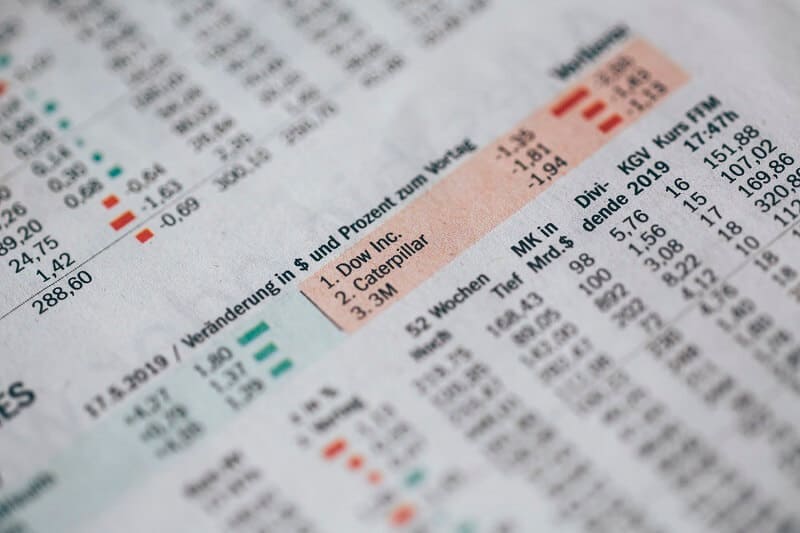
When we ask ourselves what is a better choice during a recession, cyclical or non-cyclical stocks we have to know, as first, the differences between them.
A recession is not the time to make an experiment with risks on your investments, so why dilemma cyclical or non-cyclical stocks? Well, it isn’t a dilemma for most people. The crucial aspect of an investment strategy during the recession should be to play it safe. This means no one should take the big risks at uncertain times but should find the companies with stable cash flow and low debt. The terms cyclical or non-cyclical show how much a share price is related to the changes in the economy. You, as an investor, cannot control the cycles of the economy, but you can adjust your investment strategy but you first have to understand how the whole economy is connected to your investments.
What are cyclical stocks?
Cyclical stocks have a straight correlation to the economy.
Cyclical stocks represent companies that are very favorable during the times when the economy is doing well. For example, carmakers, restaurants, branded wear makers, travel, construction are that kind of companies. But when times are difficult almost everyone will cut spendings on these products and services. When people stop buying these products, the companies’ revenues will fall for sure. Also, their stock price will fall. If there is a long downturn in the economy, the company will bankrupt or go out of the business.
Having this in mind, you should avoid cyclical stocks when the uncertainty is present in the market or in the economy. For example, during uncertain times such as a recession, you shouldn’t invest in companies that are extremely leveraged or unsafe.
Cyclical goods are not essential things. You are spending money on them less frequently. Your spendings are maybe determined by the season of the year, the current financial situation, and many other factors that can determine when and why you would buy these products and services. They are in the first place on your stop-to-buy list.
The cyclical stock’s prices are affected by economic cycles, for example, recession and recovery. Hence, they will grow and drop depending on shifts in the economic cycle. Very often you can predict these changes and as a responsible investor you will sell or buy the cyclical stock. For instance, furniture manufactures. In periods when the economy is doing well, everyone would like to remodel the house and change the furniture. But when a downturn is in the economy, who will care about buying the new furniture? The buying will drop, hence the stock price will drop along with lower demand.
To know what stock to choose, cyclical or non-cyclical stocks, we also have to know how the non-cyclical stocks perform.
What are non-cyclical stocks?
Non-cyclical stocks generally outperform the market when economic growth decreases. They are profitable no matter what are the trends in the economy. These companies are producing services and goods that we’ll always need. For example, utilities: water, electricity, gas. That is something we will need in any economic condition. These stocks are also called defensive stocks. The reason behind – they can be used to defend the investment portfolio against the consequences of economic downturns. It is always good to invest in these stocks when bad days come. In case of a recession they are safe-haven investments.
For example, toothpaste, shampoo, soap, and detergent. How can we reduce them? There is no way. Who can wait a year or two to wash the dishes?
We already mentioned utilities. These companies are a great example of non-cyclical stocks. We need energy, electricity, water for us and our families. Because of that utility companies increase and do not slip dramatically in any economic circumstances.
The disadvantage of these stocks is that they will never produce huge returns even when the economy is expanding and growing. They are safe investments but their price will never skyrocket or it could happen but rare.
Investing in non-cyclical stocks is a good strategy to avoid losses during the recession. So, cyclical or non-cyclical stocks, where to invest during a recession?
Investment strategy with a mix of stocks
You have several ways to add both cyclical or non-cyclical stocks to your investment portfolio. That can be a mix of bonds, cash, and stocks, but also the mix of growth stocks and value stocks. Another strategy is to add cyclical and non-cyclical stocks to offset changing business cycles.
When the cyclical stock drops in value you’ll have a great defense in non-cyclical stocks. During a downturn economy, cyclical stocks are less valuable and their price starts to move very fast. The truth is that it is moving up and down almost at the same speed and dramatically, within the economic cycle. Non-cyclical stocks never move that fast and radical. We described the fundamental differences but to repeat, non-cyclical stocks are practically immune to economic changes. That is their great advantage. Returns are something else. They are not huge, but these stocks will keep your nose above the water during the recession.
When the markets are growing, a good investment strategy could be to buy cyclical stocks at the beginning of the economic increase. But when you have some assumptions or signals that the recession is possible to come, sell them just before it happens. Sadly, trying to predict a future recession is a lost battle. That is the reason to hold a mix of cyclical and non-cyclical stocks in your portfolio. Why should we even ask or have a dilemma with cyclical or non-cyclical stocks when we should hold them both in our portfolios.
That way, we can provide a well-position to benefit when the economy is expanding. But, at the same time, we will have a shield when the economy takes a turn for the worse.
Where to find cyclical stocks?
Since it isn’t possible to name every cyclical industry (there is not enough room here) we can give you some clues where to look at.
For example, hotels, restaurants, carmakers, airlines, banks. They all have something in common. In periods of strong economies, they are all expanding. People are traveling, need a place for vacations, they want to stay at the hotels, they would like to buy a new car, or rather want to eat in restaurants than at their homes. Also, some high-tech stocks can be cyclical. People really want them in prosperous times. Companies tend to invest money in developing new technology, new products. Startups are growing, also.
Not to forget banks. They are also a good example of cyclical stocks during the growing economy.
Where to find non-cyclical stocks?
These defensive stocks can be found among retailers, utilities. Consumer staples stocks are one of them, also. These stocks have modest growth but they are considered safe investments, that provide stable profits, and are defensive, and dividend-paying stocks. The most important role is that they can outperform the down markets.
These non-cycling companies work in a strong sector, their products are always in demand. We cannot cut our needs for them. They are able to survive great challenges and economic cycles. That’s why they are so much attractive especially during the recession if you add them as defensive stocks to your portfolio.
Strategies to choose the stocks
It is the same as any investing strategy. You have two ways: the top-down or the bottom-up strategy.
The top-down strategy means to observe the economy as a mass and select stocks that will perform well during specific economic conditions. When applying this strategy you must be sure you are well informed about the macroeconomy, that you understand different sectors. You have to recognize how a particular industry will perform during the various business cycles, also when the stock price will rise when it will drop.
For both cyclical or non-cyclical stocks, this top-down strategy is the most suitable.
The bottom-up strategy means you have to look at the stock alone and to decide what stock to buy or sell.
This strategy is a good one when choosing cyclical or non-cyclical stocks only when they are in correlation, meaning the stocks are moving synchronized. For example, the jewelry manufacturer will have a decline in the value during the recession. People will stop buying jewelry. But at the same time, the stock of the electricity provider will perform well. So, keep in mind that you have to have both in your portfolio.
Bottom line
There is no need to ask yourselves what stocks to add to your portfolio, cyclical or non-cyclical stocks. You must hold both of them if you want huge returns and protection during market downturns.
During economic growth cyclical stocks will increase more. Hence, during recessions, people will decrease their spending and will squeeze the budgets. They will continue to buy and spend money only on the goods they really need. So, the companies that have these products will bloom.



















